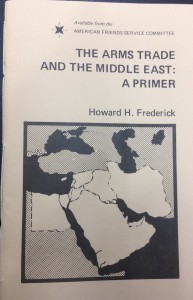Michael Piersall is a senior undergraduate student in Political Science and Human Rights minor. In his blog series, he will study materials available in the Dodd Research Center’s collections to explore American Political Leadership with regards to Cold War activities in Latin America.
As a Political Science major, my academic focus often centers on the decision making process behind government action. As an “American-ist” more specifically, my interest lies in the deliberation and processes of the federal institutions that comprise the United States government. This semester, I have been given the privilege to examine materials in the Thomas J. Dodd Research Center that relate to U.S. governmental actions precipitated by its political hegemony, specifically in Latin America. While these materials are in no way restricted from public access, I deem this a privilege because I am, above all else, a current-affairs wonk; I prefer analyzing events through their perception in contemporary contexts than an isometric historical glance that one can find on, for instance, Wikipedia. Further, my academic orientation towards Human Rights, specifically political and economic rights has provided a lens for additional analysis of the international consequences of U.S. actions.
To that end, I have spent the last few weeks reviewing several documents from the Human Rights Collections that pertain to the U.S. covert operations of the late-1970’s and 1980’s in El Salvador. This assertion of U.S. hegemony is an example of its late 20th Century brand of foreign intervention. Beginning under President Carter, and dramatically expanded under Reagan, this incursion into the domestic affairs took the form of economic, political, and covert wars. Robert Armstrong and Phillip Wheaton, left-leaning journalists for Solidarity Publications, define the two political camps advocating for intervention in El Salvador as either the “Militarists”, bureaucrats in the Department of Defense, the Central Intelligence Agency and other such institutions, and the “Reformists” in offices such as Agency for International Development or the quasi-public American Institute for Free Labor Development, which was created in concert with the AFL-CIO and the funding of the U.S. federal government.

